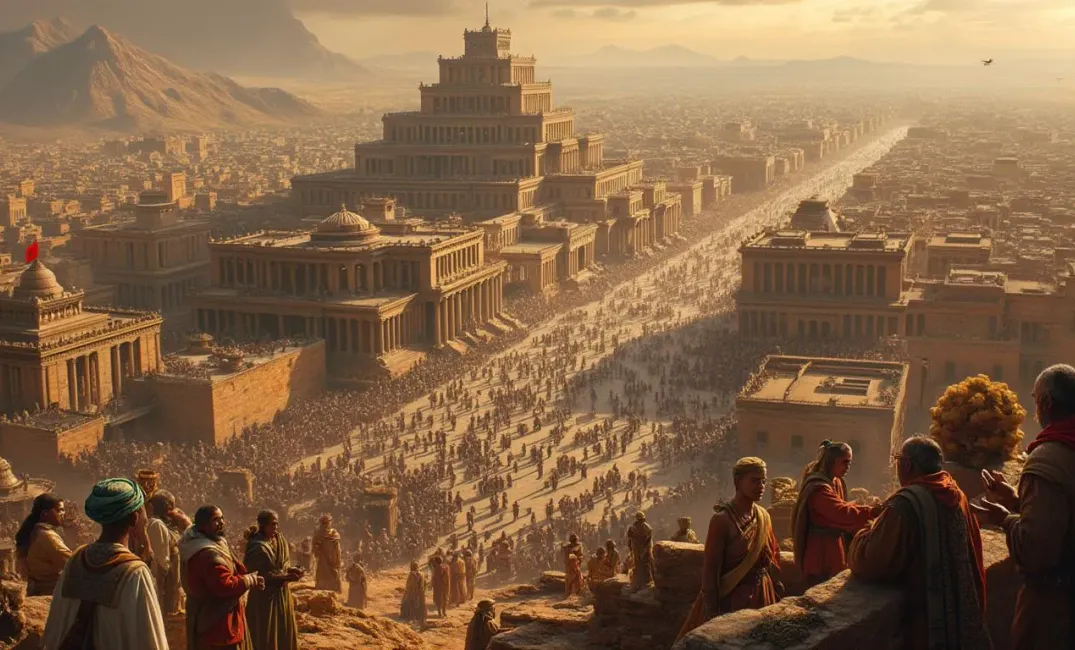Introduction: The Rise and Fall of Human Empires
"Empires rise and empires fall; it is a pattern as old as human civilization itself." — Unknown Historian
Empires have left indelible marks on the tapestry of human history, shaping cultures, economies, and political landscapes across millennia. By understanding the rise and fall of empires, we gain insight into the dynamics of power, societal evolution, and legacy. Empires, both ancient and modern, reveal a complex interplay of ambition, conquest, innovation, and cultural exchange, shaping much of human civilization's legacy.
Foundations of Empires: Power and Expansion
The Engine of Conquest
- Military Might and Strategy: Empires often grew through military conquests, leveraging superior tactics, technology, and organization. The Roman legions, with their disciplined formations and strategic acumen, exemplified such martial prowess.
- Territorial Expansion: Expanding territorial boundaries elevated empires' status and influence. Land acquisition through campaigns enabled resource control, trade routes, and strategic defense against rivals.
Governance and Integration
- Administrative Structures: Effective governance required advanced bureaucratic systems, maintaining order and implementing policies across vast territories. The Persian Empire's satrapies exemplified such administrative innovations.
- Cultural Assimilation and Autonomy: Successful empires balanced imposing control with fostering cultural assimilation and allowing local autonomies, thereby reducing resistance and nurturing cohesion.
Cultural Legacy: Exchange and Synthesis
Cultural Blossoming and Synthesis
- Architectural and Artistic Flourishing: Empires propelling monumental architecture and artworks. The Mughal Empire epitomized this with stunning edifices like the Taj Mahal, symbolizing artistic exchange.
- Intellectual and Philosophical Exchange: Cultural interchanges within empires propagated philosophical and intellectual insights. The Hellenistic period under Alexander the Great spurred universal insights, melding Greek philosophies with Eastern traditions.
Impermanence and Imprint
- Technological Advancements and Knowledge Transfer: Empire-fueled innovations pushed technological boundaries in metallurgy, astronomy, and agriculture. The dissemination of Islamic scholarship into Europe through Iberia exemplifies this legacy.
- Linguistic Imprint: Linguistic influences endured, with languages like Latin and Pahlavi spreading across and beyond empires, facilitating communication and forming enduring linguistic bedrock.
The Decline: Forces of Disintegration
Internal Strife and Fragmentation
- Political Instability and Corruption: Internal conflicts weaken empires, deteriorating central authority's control, as evidenced by Rome's numerous civil wars and political intrigues destabilizing central power.
- Economic Challenges: Strains from logistical demands hampered economies, leading to inflation, taxation crises, or depletion of resources, unable to sustain expansive imperial machinery.
External Pressures and Transformations
- Invasions and Outsider Threats: Influxes of external threats contribute to eventual downfall, marked by invasions from barbarian tribes like the Visigoths and Vandals, who eroded Roman strength.
- Cultural and Technological Shifts: Adaptation failure to social, cultural, or technological shifts often hastened decline, as exemplified by China's adaptation to new trade patterns and naval technologies belatedly leading to its insularity.
Lessons and Legacy for Future Civilizations
Governance and Innovation
- Balancing Power and Representation: Successful governance requires a balance between central authority and local representation, accommodating diversity and minimizing the impact of autocratic excesses.
- Fostering Innovation and Adaptation: Encouraging innovation strengthens resilience against change. Empires adapting creatively, like Byzantium's embrace of new military tactics, sustained longevity.
Cultural Meritocracy and Unity
- Embracing Diverse Narratives: A meritocratic approach rooted in diverse thoughts and cultures fosters vibrant societies. Empires like the Ottomans integrated cultural tapestries, bolstering intellectual and commercial growth.
- Celebrating Unity Within Diversity: Solutions lie not in erasure but in symbiotic coexistence by celebrating, not stifling, unique cultural legacies engendering shared achievements and aspirations.
Conclusion: Echoes of Empire Across Time
"Empires are a reflection of humanity's ambition, creativity, and complexity, wielding both a warning and a testament." — Contemporary Scholar
Human empires narrate tales of unprecedented transformation, revealing the power dynamics, cultural fusion, and diverse legacies of our shared history. As we align ourselves on new horizons and cosmic ventures, we inherit lessons from these expansive civilizations with both history's caution and its promise.
Future cosmic societies seeking empires of balance, creativity, and justice rise empowered by the timeless wisdom of human civilizations' past. Let their echoes resound across both time and galaxies, shaping harmonious legacies that transcend our own.
In this ongoing odyssey of exploration and civilization-building, we carry the torch of humanity — illuminating pathways to thriving beyond terrestrial confines, guided by wisdom unearthed from the collective past, and sowing seeds of future hope and prosperity among the stars.
INNOVATION, EMPIRES, POWER AND INFLUENCE, DECLINE, CULTURAL EXCHANGE, HISTORY, LEGACY, GOVERNANCE, CIVILIZATION, RISE AND FALL

